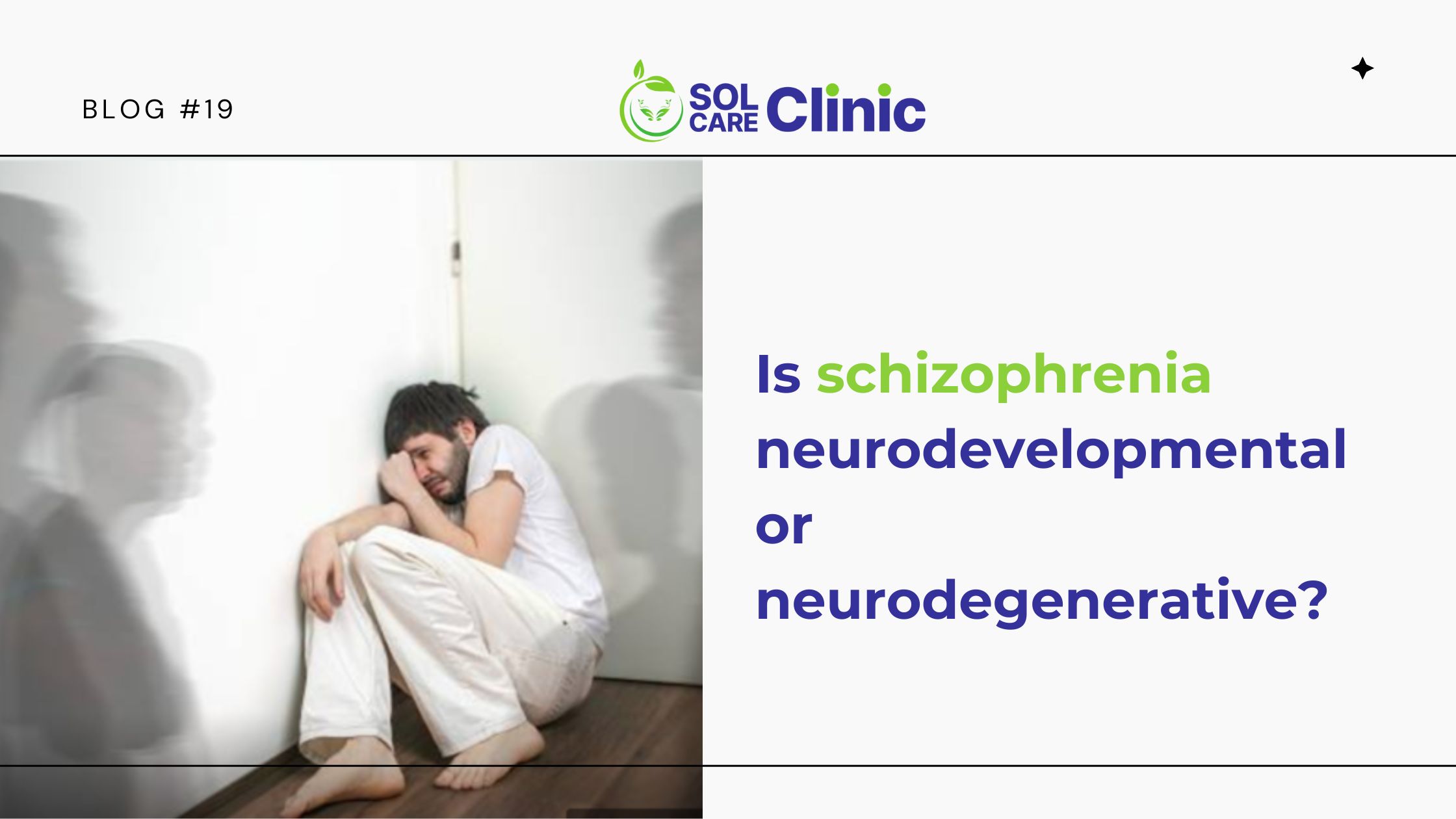Schizophrenia is a complex and chronic mental disorder that affects about 1% of the global population. Characterized by symptoms such as hallucinations, delusions, and impaired cognitive functions, schizophrenia is highly disabling and significantly impacts quality of life. The origin of schizophrenia has been a subject of ongoing debate, with two prominent hypotheses emerging: the neurodevelopmental and neurodegenerative hypotheses.
Schizophrenia: Neurodevelopmental vs. Neurodegenerative Theories
Schizophrenia is a severe mental illness that disrupts thought processes, emotional regulation, and social interactions. Common symptoms include delusions, hallucinations, disorganized thinking, and reduced motivation. The causes of schizophrenia remain unclear, although a mix of genetic, biological, and environmental factors is believed to contribute.
Prevalence and Impact of Schizophrenia
Schizophrenia affects people worldwide, often beginning in early adulthood, and is a leading cause of disability. The problem influences people and forces profound monetary weight on families and healthcare systems. Early analysis and treatment are fundamental. However, the quest for compelling medicines stays tested because of the complexity of its causes.
Neurodevelopmental Hypothesis
The neurodevelopmental hypothesis suggests that schizophrenia arises due to abnormal brain development, especially during critical periods such as prenatal and early postnatal life. This hypothesis posits that early disruptions in brain development make an individual more vulnerable to developing schizophrenia later in life.
Evidence for the Neurodevelopmental Hypothesis
Support for this hypothesis comes from studies indicating that abnormal brain development in utero and early childhood is linked to the later emergence of schizophrenia. Structural brain abnormalities, such as ventricular enlargement and reduced grey matter, are often observed in individuals with schizophrenia. Furthermore, these abnormalities appear early, hinting at developmental irregularities rather than damage acquired later.
Prenatal Factors
Various prenatal factors are associated with an increased risk of schizophrenia. For example, maternal infections, malnutrition, and stress during pregnancy have been correlated with a higher likelihood of the disorder. These factors can impact fetal brain development, disrupting neural circuits and creating vulnerabilities for later life.
Perinatal Factors
Complications during birth, such as oxygen deprivation, have also been associated with an increased risk of schizophrenia. The brain is particularly susceptible to damage during perinatal periods due to its rapid growth and development. Birth complications may lead to lasting changes in brain structure and function, contributing to the disorder’s emergence.
Postnatal Factors
Postnatal development is another basic period. Horrendous mind wounds, openness to poisons, and youth stressors can additionally add to schizophrenia risk. Adverse childhood experiences, particularly in the first few years of life, can influence brain maturation, impacting the development of neural pathways implicated in schizophrenia.
Criticisms of the Neurodevelopmental Hypothesis
While the neurodevelopmental hypothesis provides insights into the early origins of schizophrenia, it has limitations. One significant criticism is that it does not adequately explain the progressive nature of the disorder, as many individuals experience worsening symptoms over time. Additionally, this hypothesis tends to overlook the role of neurodegenerative changes observed in people with schizophrenia, such as ongoing gray matter loss and altered brain chemistry.
Neurodegenerative Hypothesis
In contrast, the neurodegenerative hypothesis argues that schizophrenia is primarily due to progressive brain damage occurring over time. This theory suggests that, like neurodegenerative disorders such as Alzheimer’s disease, schizophrenia involves the gradual loss of neural tissue and functionality.
Evidence for the Neurodegenerative Hypothesis
The neurodegenerative hypothesis is supported by brain imaging studies that have shown continuous structural changes in the brains of individuals with schizophrenia. These studies often reveal progressive loss of gray matter, particularly in areas like the prefrontal cortex and temporal lobes, which are essential for cognitive and emotional processing.
Brain Imaging Studies
Advanced neuroimaging strategies have empowered researchers to notice changes in mind structure after some time. Longitudinal examinations show that certain individuals with schizophrenia experience moderate decreases in cortical thickness and cerebrum volume. These findings line up with the neurodegenerative speculation, proposing that schizophrenia could include continuous harm as opposed to static anomalies.
Neurochemical Changes
Beyond structural alterations, neurochemical changes have moreover been noted. Schizophrenia is connected with dysregulation in synapses, particularly dopamine. A couple of experts suggest that neurodegenerative cycles may be at risk for these substance-irregular characteristics, inciting incidental effects like psychosis and cognitive impairments. The involvement of inflammatory markers further supports this view, as chronic inflammation can contribute to neuronal damage.
Criticisms of the Neurodegenerative Hypothesis
Despite its strengths, the neurodegenerative hypothesis also faces criticism. Many individuals with schizophrenia don’t show critical weakening in that frame of mind over the long run, and side effects might be balanced out or tried to improve with treatment. Moreover, this hypothesis doesn’t represent the beginning stage of adolescence in immaturity or early adulthood, proposing that neurodevelopmental elements might assume a role.
The Interaction Between Neurodevelopment and Neurodegeneration
The interplay between neurodevelopment and neurodegeneration is an emerging area of research. Rather than viewing schizophrenia as a result of either one process or the other, some researchers propose that both factors interact over time, contributing to the disorder’s complexity.
The Vulnerability-Stress Model
The vulnerability-stress model recommends that people with neurodevelopmental weaknesses are more susceptible to ecological stressors, which can set off or compound neurodegenerative cycles. For instance, an individual with strange mental health could encounter sped-up brain degeneration when presented with huge pressure, injury, or substance abuse.
The Neurodevelopmental-Neurodegenerative Cascade
A proposed model joining the two speculations is the neurodevelopmental-neurodegenerative fountain. This theory states that early mind irregularities make people more vulnerable to later degeneration. As per this model, an underlying affront during mental health makes an establishment for additional crumbling, bringing about the beginning and movement of schizophrenia.
Future Directions for Research
Future research sought to investigate how research, ecological, and organic variables associate over the life expectancy to impact mental health and degeneration. Examining preventive interventions during basic periods could give experiences in limiting risk. In addition, creating medicines focusing on both neurodevelopmental and neurodegenerative components might offer new expectation for individuals living with schizophrenia.
Conclusion
The origins of schizophrenia are debated, and both neurodevelopmental and neuropathological hypotheses offer valuable insights. Understanding this disorder requires an integration of both theories since evidence suggests that brain development can organize neuropathy, leading to a continuous flow of depression. Research can provide new therapies and improve outcomes for those affected by schizophrenia.





